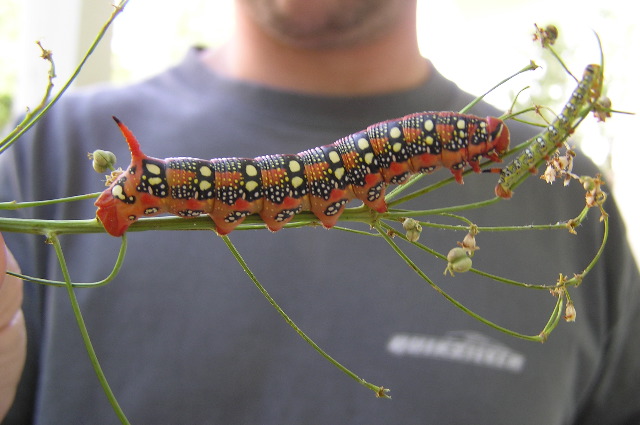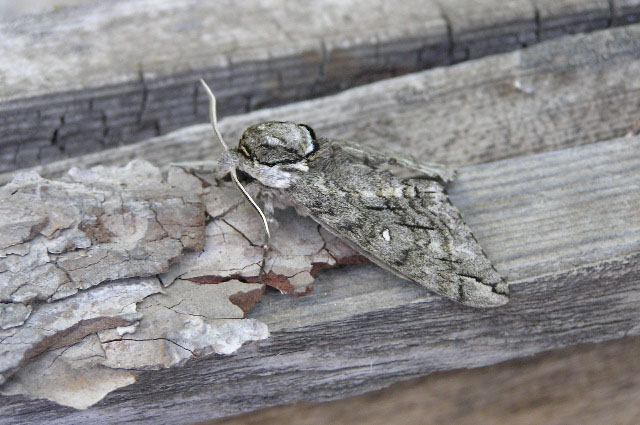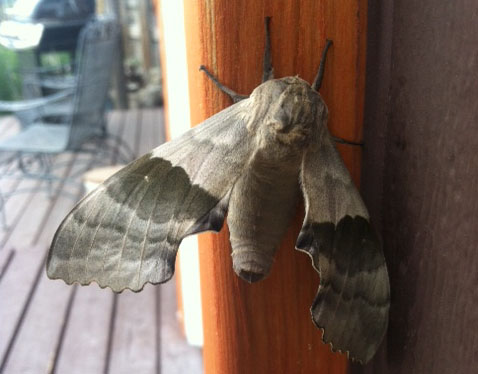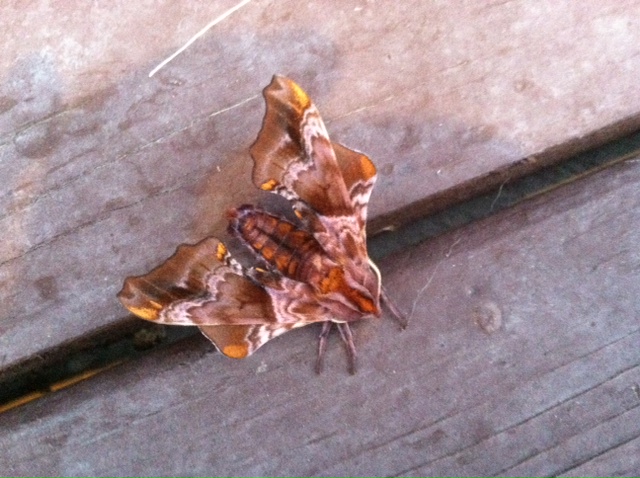Cascade County, Montana
Sphingidae


This page is inspired by and dedicated to the Karl and Ingrid Ryder family who sent me the image of Hyles euphorbiae at the top of the page.
Ingrid writes, "Hi there. We found this caterpillar just yesterday (07/29/06) while out for a family walk. We live in Great Falls, Montana (Cascade County). We looked through your Sphinginae subfamily pictures but couldn't identify this dark red caterpillar whom my five year old son said looks like Spiderman. Notice the much smaller green version on the same stem.
"This caterpillar is a monster and not surprisingly, we saw a few humongous moths here this spring, early summer, including a hummingbird moth just a few days ago eating nectar out of my nicotiana flowers. We have never seen so many large moths around. Thanks for the look.."
Hyles euphorbiae was introduced from Europe to try to control leafy spurge. The moth seems to be doing very well in North America and its range seems to be expanding. Earlier this year I received images of adults from South Dakota.
Ingrid also sent the beautiful image of the Ceratomia undulosa moth, below.

Ceratomia undulosa, May 15, 2006, Great Falls, Montana,
courtesy of Ingrid Ryder.
It is hoped that this checklist, with the thumbnails and notes, will help you quickly identify the moths you have encountered.
A "WO" after the species name indicates that I have no confirmed reports of this species in Cascade County, but I (William Oehlke) expect that this moth is present or might be present. A USGS indicates the moth is reported on the USGS website and/or in Moths of Western North America, #2. Distribution of Sphingidae of Western North America, revised, an excellent little booklet available through Paul Opler.
Please help me develop this list with improved, documented accuracy by sending sightings (species, date, location), preferably with an image, via email to Bill Oehlke.
Many thanks to Sandra Rumney who confirms Pachysphinx occidentalis and Paoanias myops in Cascade, Cascade County.

Pachysphinx occidentalis, Cascade, Cascade County, Montana,
June 23, 2014, courtesy of Sandra Rumney.

Paonias myops, Cascade, Cascade County, Montana,
July 6, 2014, courtesy of Sandra Rumney.
Sphinginae subfamily
Smerinthini Tribe:
Macroglossinae subfamilyDilophonotini tribe
Macroglossini tribe
|
This page is brought to you by Bill Oehlke and the WLSS. Pages are on space rented from Bizland. If you would like to become a "Patron of the Sphingidae Site", contact Bill.
Please send sightings/images to Bill. I will do my best to respond to requests for identification help.
This website has been created and is maintained by Bill Oehlke without government or institutional financial assistance. All expenses, ie., text reference support material, webspace rental from Bizland, computer repairs/replacements, backups systems, software for image adjustments (Adobe Photoshop; L-View), ftp software, anti-virus protection, scanner, etc. are my own.
I very much appreciate all the many images that have been sent to me, or of which I have been granted permission to copy and post from other websites. All images on this site remain the property of respective photographers.
If you would like to contribute to the maintenace of this website by sending a contribution to
Bill Oehlke
Box 476
155 Peardon Road
Montague, Prince Edward Island, C0A1R0
Canada
your donation would be much appreciated and would be used for
1) paying for webspace rental;
2) paying for computer maintenance and software upgrades;
3) purchases of additional text reference material (journals and books) in anticipation of expanding the site to a worldwide Sphingidae site;
4) helping to pay my daughter's tuition (completed spring of 2013); with anything left over going to humanitarian aid.
If you are mailing a check from USA, please use $0.85 ($1.15 is 2014 rate) postage. Donations can also be made through Paypal via the button below.